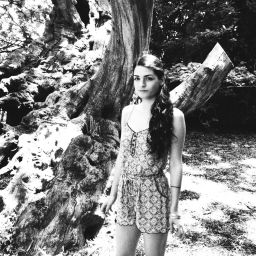Story highlights
A community lives at a train station in Bucharest, Romania
Photographer Yasmin Balai spent time with residents in the cramped conditions
Every hour, dozens of trains zip in and out of “Gara de Nord” in Bucharest, Romania.
Like all train stations, it is generally transient, taking passengers from point A to B. People stay only as long as their wait for boarding call.
But there are some who have set up shop here – not to make a living – but to live.
An entire community resides at Gara de Nord, in an underground series of tunnels that was built as Bucharest’s central heating system decades ago.
Photographer Yasmin Balai’s background in social issues led her on a personal journey to document the lives of these tunnel dwellers.
Her photo series “Silver Linings” depicts the tunnel commune as a hot, dark, cramped space, but she said it’s an attempt to create a safer environment – a community for the poor, the outcasts, the ex-cons and the runaways.

She is aware that her pictures have a heavy atmosphere to them, but she said “the reality is that I am looking at these images with empathy. I want people to understand that nothing can be simply seen in black and white, as right or wrong. People are in certain situations because of a chain of causes and their backgrounds, so it is not up to us to judge them.”
A social activist first and photographer second, Balai spends time getting to know her subjects, talking to them and handing out food.
“If something happens to catch my eye, I will take a picture of it, but it’s not like I am chasing around for photographs with the camera in my hand,” she said. “I try to photograph a mix between personal and quiet moments, with scenes which are also describing the daily activities and interactions of the community.”
These tunnel walls don’t discriminate against age, race or gender; it’s a blended collective. Drug use is prevalent in Balai’s photos, but she is trying to portray something more: “the ambition of this community to build a place of their own, a place where they feel like they belong to, away from the street.”
During her time there, Balai said she didn’t mind the tight quarters. The tunnels were in constant reconstruction, being repainted or redecorated by the members of the community. There was always some music or television on, something to lighten up the mood.
The people living at Gara de Nord were proud of their makeshift homes, she said. But at the same time they were very much aware of their living conditions and conscious about how other people, especially in foreign countries, might react to it.
“Silver Linings” represents hope; they have found their silver linings in this community.
Balai also chose the title because of the color of Aurolac, the industrial silver paint that some in the community huff to get high.
“Emotionally, it can be very exhausting to work in such an environment,” she said. “You naturally start to care for people and to worry about their health and emotional well-being. It is of course hard to see them taking harmful drugs, to see them getting worse, to visit them in the hospital and eventually to go to identify them and stand beside their graves.”
For her, documentary photography can, to a certain extent, be its own way of sociopolitical activism.
“It took me at least half a year of observation and becoming involved before I knew how I wanted to represent the community,” she said. “Photographing someone automatically means to take on a big responsibility of their representation in the public eye, and as a photographer you should always be aware of that.”
Yasmin Balai is a photographer based in Romania. You can follow her on Twitter.









